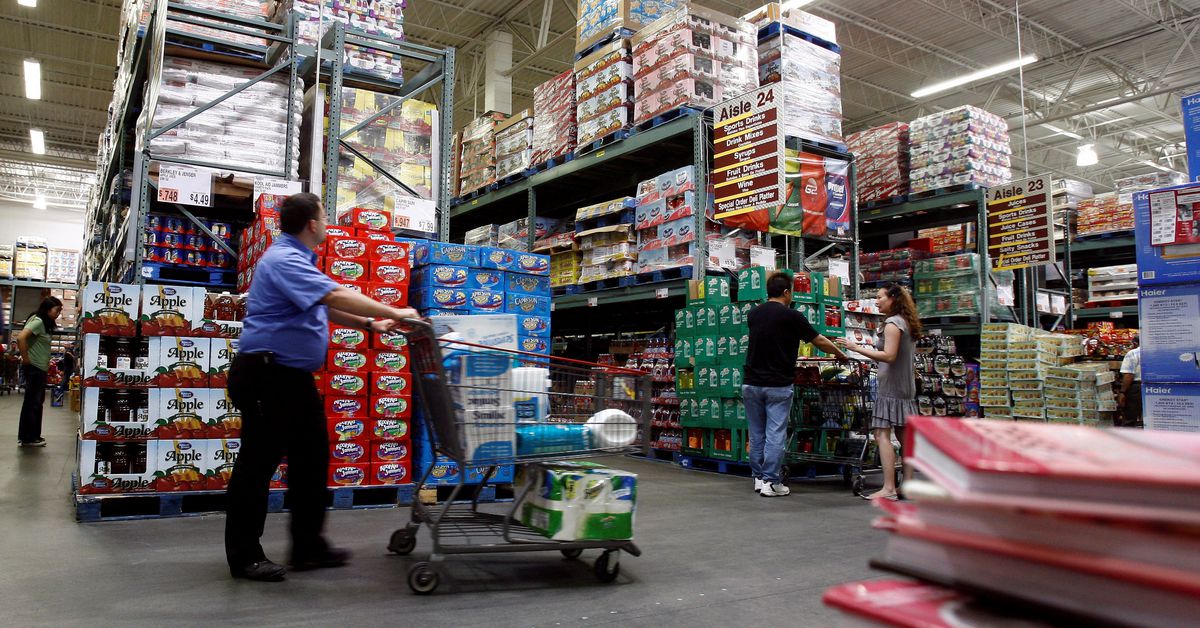- Core capital goods orders fall 0.4% in March
- Shipments of core capital goods drop 0.4%
- Goods trade deficit narrows 8.1%
[ad_1]
WASHINGTON, April 26 (Reuters) – New orders for key U.S.-manufactured capital goods fell more than expected in March and shipments declined, suggesting that business spending on equipment likely remained a drag on economic growth in the first quarter.
But the economy appears to have stayed on a solid growth path last quarter, with other data from the Commerce Department on Wednesday showing the goods trade deficit narrowed sharply due to a rebound in exports. Even though business spending on equipment weakened, demand remained strong for goods like computers and electronic products as well as electrical equipment, appliances and components.
“The economy isn’t going off the rails yet,” said Christopher Rupkey, chief economist at FWDBONDS in New York.
Orders for non-defense capital goods excluding aircraft, a closely watched proxy for business spending plans, dropped 0.4% last month. Data for February was revised down to show a 0.7% drop in these so-called core capital goods orders instead of the previously reported 0.1% dip. Economists polled by Reuters had forecast core capital goods orders would slip 0.1%.
Orders for electrical equipment, appliances and components increased 0.8%, while bookings for computers and electronic products surged 1.9%. Orders for machinery, primary metals and fabricated metal products barely rose.
But unfilled orders of core capital goods continued their steady decline, indicating there was less in the pipeline to drive activity. Inventories of these goods rose 0.2%.
Business investment is under threat from a tightening in credit following recent financial market turmoil, which could make funding less accessible to small firms and households. That is spilling over to the manufacturing industry.
Manufacturing, which accounts for 11.3% of the U.S. economy, is already reeling from the Federal Reserve’s fastest interest rate hiking campaign since the 1980s to tame inflation.
Spending is also shifting away from goods to services, while sluggish global demand is crimping exports. The inventory cycle is also turning, with restocking by businesses slowing to match cooling demand.
Shipments of core capital goods decreased 0.4% in March after falling by a similar margin in February. Core capital goods shipments are used to calculate equipment spending in the gross domestic product measurement. Shipments of nondefense capital goods, which also go into the calculation of GDP, rebounded 3.6% after slumping 1.1% in February.
“Equipment spending was likely a bit weaker in the first quarter,” said Shannon Seery, an economist at Wells Fargo in New York. “Conditions for new capital investment continue to grow less favorable. We anticipate a further tightening in banks’ lending standards to take hold.”
Stocks on Wall street were mixed. The dollar fell against a basket of currencies. U.S. Treasury prices rose.
GOODS TRADE DEFICIT NARROWS
Most economists expect a small decline in business spending on equipment when the government publishes its advance estimate of GDP for the first quarter on Thursday. Business investment in equipment fell by the most in 2-1/2 years in the fourth quarter.
According to a Reuters survey of economists, GDP likely increased at a 2.0% annualized rate in the January-March period. The economy grew at a 2.6% pace in the fourth quarter.
While orders for items ranging from toasters to aircraft that are meant to last three years or more surged 3.2% last month, they were driven by the volatile civilian aircraft category, which soared 78.4% after falling 8.4% in February.
These so-called durable goods orders dropped 1.2% in February. Boeing (BA.N) reported on its website that it had received 60 aircraft orders, sharply up from only five in February.
Expectations for another quarter of strong GDP growth were bolstered by a second report from the Commerce Department on Wednesday that showed the goods trade deficit contracted 8.1% to $84.6 billion last month.
Exports of goods increased $4.9 billion to $172.7 billion, boosted by industrial supplies, which include petroleum, as well as by motor vehicles and consumer goods. But food exports fell.
Goods imports dropped $2.5 billion to $257.3 billion, pulled down by decreases in industrial supplies, capital goods and other goods. Imports of consumer goods increased. While the decline in imports is supportive of higher GDP, the drop in capital goods underscored weakening business spending.
Trade has contributed to GDP growth for three straight quarters. Economists viewed the improvement in trade as temporary and believed a moderation in the pace of inventory accumulation relative to the fourth quarter did not have a major impact on GDP growth last quarter.
The Commerce Department also reported that wholesale inventories edged up 0.1% in March, matching the gain in February. Retail inventories increased 0.7% after rising 0.3% in the prior month.
Excluding motor vehicles, retail inventories rebounded 0.4% after falling 0.1% in February. This component goes into the calculation of GDP. Inventory investment was the biggest driver of GDP growth in the fourth quarter.
“We don’t believe this marks a change in trade’s cooling trajectory, with imports facing weaker consumer demand and tighter lending standards for businesses, while demand for exports will slow due to the continued strength of the dollar and declining economic activity abroad,” said Matthew Martin, a U.S. economist at Oxford Economics.
Reporting by Lucia Mutikani; Editing by Chizu Nomiyama
Our Standards: The Thomson Reuters Trust Principles.
[ad_2]
Source link

